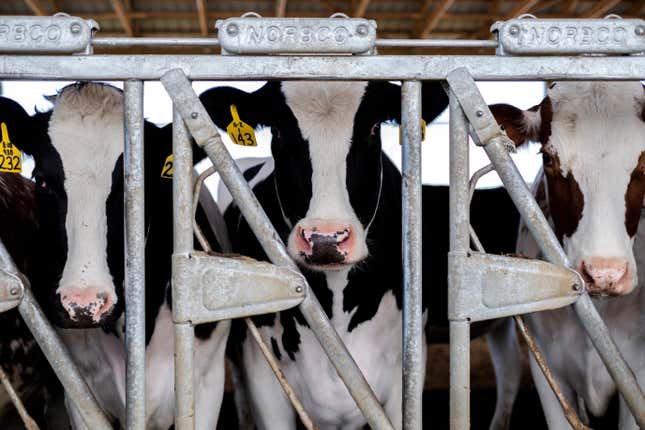
The U.S. Food and Drug Administration (FDA) said on Thursday that genetic fragments of the H5N1 bird flu virus have been detected in one in five retail samples of milk it tested. This comes just days after the agency first said it found inactive traces of the virus in the commercial milk supply.
The agency began running tests on a nationally representative sample of commercial milk after the virus was detected in multiple dairy cattle herds across several states. This review sparked the U.S. Department of Agriculture (USDA) to issue a federal order on Tuesday mandating that cows that are moved across state lines must be tested for the bird flu.
However, the FDA maintains that commercial, pasteurized milk is still safe to drink. “To date, the retail milk studies have shown no results that would change our assessment that the commercial milk supply is safe,” the FDA said in its update on Thursday.
The FDA, USDA, and the U.S. Centers for Disease Control and Prevention (CDC) are all now working together to investigate and monitor this growing outbreak.
Here is everything you need to know about the bird flu outbreak affecting U.S. dairy cows.
What is H5N1?
H5N1 is a type of bird influenza virus that was first detected in 1996 in domestic water foul in Southern China. It is highly-contagious among birds.
A new outbreak of the virus was first detected in 2020 among wild birds in Europe. It has since spread to domestic poultry and occasionally mammal species, such as foxes, sea lions, and cows.
In the U.S. alone, over 90 million commercial poultry and backyard birds across 48 states have been infected with the virus, according to the CDC.
How many cows have been infected?
As of Wednesday, the USDA says 33 dairy cattle herds across eight states have been affected. The eight states with infected cattle are: Idaho, Michigan, Texas, New Mexico, South Dakota, Kansas, North Carolina, and Ohio.
Is milk safe to drink?
The FDA said on the Thursday that the commercial milk supply is safe for two reasons.
One, pasteurization, in which milk is heated to a high temperature for a specific period of time, kills harmful bacteria and viruses. The agency said that even if raw milk was detected to have the virus, the pasteurization process is generally expected to eliminate pathogens to “a level that does not pose a risk to consumer health.”
Second, milk from the sick cows is being diverted and destroyed.
Is beef safe to eat?
“So far there have been no detections in commercial beef herds. USDA is confident that the meat supply is safe,” the USDA said on Thursday.
The agency reminded consumers to properly handle raw meat and to cook it to a safe internal temperature that kills bacteria and viruses.
How many people have been affected during this outbreak?
Since 2022, only two people in the United States have tested positive for H5N1; both cases were not fatal.
The most recent case was detected in late March in Texas, according to the CDC. The person was infected while working on a commercial dairy farm and had worked closely with cows presumed to have been infected, the World Health Organization (WHO) said. The only symptom they showed was eye redness.
The other case occurred in Colorado with a person working directly to cull (depopulate) infected poultry.
H5N1 does not currently transmit between humans easily, however, the WHO warns that as it spreads it has the “potential to mutate to become more contagious.”